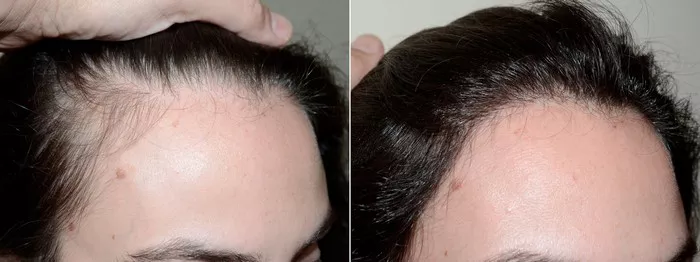A successful hair transplant procedure requires proper care and attention during the recovery process. One common question that arises after a hair transplant is when it’s safe to start using oil on the scalp. In this article, we will provide you with a comprehensive guide on when and how to use oil after a hair transplant, ensuring optimal healing and long-lasting results.
The Healing Timeline After a Hair Transplant
Before discussing the use of oil, it’s important to understand the stages of healing that take place after a hair transplant procedure:
1. Immediate Post-Op:
In the first few days, there might be mild discomfort, swelling, and scabbing around the transplant site.
2. First Weeks:
Scabs usually fall off within a week or two. Some transplanted hairs might shed, which is normal.
3. First Month:
The healing process progresses, and any residual redness and swelling subside.
4. Months 2-3:
New hair growth begins as dormant follicles start producing hair.
5. Months 6-12:
Hair continues to grow and thicken, gradually achieving fuller results.
Patients should follow their surgeon’s instructions regarding care, avoid strenuous activities initially, and expect full results within about a year.
When Can You Start Using Oil?
The timing for using oil after a hair transplant can vary depending on the recommendations of your surgeon. Generally, it’s advised to wait until the transplanted grafts have fully healed and taken root before using any oils on the scalp. This typically means waiting for a few weeks, usually around 2-3 weeks post-surgery.
Using oils too early after a hair transplant could potentially interfere with the healing process or affect the grafts. It’s important to follow your surgeon’s post-operative care instructions closely to ensure proper healing and the best possible outcomes. If you’re unsure about when to start using oils, consult with your hair transplant surgeon for guidance.
How to Use Oil Safely?
When using oil after a hair transplant, follow these guidelines to ensure safety and effectiveness:
1. Choose the Right Oil
Opt for a mild and hypoallergenic oil that is suitable for sensitive skin. Avoid oils with strong fragrances or potentially irritating ingredients.
2. Clean Scalp
Before applying oil, ensure that your scalp is clean and dry. Gently wash your scalp with a mild shampoo to remove any residue.
3. Gentle Application
Apply a small amount of oil to your fingertips and gently massage it into the scalp. Avoid excessive pressure or rubbing, as the grafts are still delicate.
Benefits of using oil
Using oils can offer various benefits for hair and scalp health:
1. Moisturization:
Oils like coconut, argan, and jojoba can provide moisture to the scalp and hair, preventing dryness and reducing frizz.
2. Nourishment:
Many oils contain vitamins, minerals, and fatty acids that nourish the hair follicles, promoting healthier hair growth.
3. Strengthening:
Certain oils, such as castor oil, can help strengthen hair strands and reduce breakage.
4. Stimulation:
Massaging oils into the scalp can improve blood circulation, potentially enhancing hair follicle function and growth.
5. Reduced Scalp Irritation:
Oils with anti-inflammatory properties, like tea tree oil, can soothe an irritated scalp.
It’s important to choose oils suitable for your hair type and needs, and to use them in moderation. If you have had a hair transplant, follow your surgeon’s recommendations regarding the appropriate timing for using oils to ensure optimal healing.
See Also: The necessity of using Rogaine after hair transplantation
Are oils an alternative treatment after hair transplantation?
Oils are not typically recommended as an alternative treatment immediately after a hair transplant. In the initial healing phase, the focus is on proper wound care and allowing the transplanted grafts to establish themselves. While some natural oils like jojoba or coconut oil are known for promoting hair health, using them too early after surgery can potentially disrupt the healing process or affect graft survival. Once the grafts are well-established, incorporating oils into your hair care routine might support overall hair health, but it’s crucial to consult your surgeon before introducing any new products to your post-transplant care regimen.
Conclusion
Using oil after a hair transplant can be beneficial for maintaining scalp health and comfort during the recovery process. However, it’s essential to follow the guidance of your hair transplant surgeon and wait until the appropriate time to introduce oil to your routine. Remember that oil should be a gentle addition to your post-transplant care and not a substitute for the healing process. By adhering to the provided guidelines, you can ensure that your hair transplant recovery is smooth and successful.


